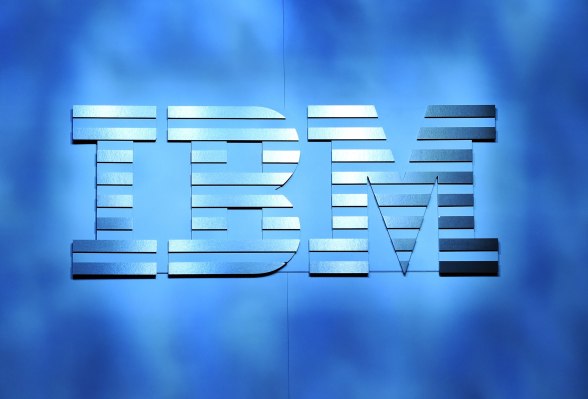How do you solve a problem like IBM?
Yesterday evening the company reported its 20th straight consecutive quarter of year-on-year losses. The company’s quarterly earnings beat expectations, but that wasn’t enough to save the share price.
As a result, shares plummeted in after-hours trading and refused to gain ground over the course of the day, dropping nearly 5 percent, or more than $8.
As the Motley Fool noted, the miss and resulting tumble erased nearly $9 billion from IBM’s market capitalization and brought the Dow Jones Industrial Average down by 64 points.
The problem for IBM is the dwindling value of the consulting business on which it built much of its fortunes in the 1990s and early 2000s.
First, the big numbers. Earnings per share were $2.38 versus expectations of $2.35, according to Thomson Reuters. Meanwhile, revenue fell to $18.16 billion, compared with the $18.39 billion that “the Street” expected.
The big numbers
That’s a 1 percent gain in earnings per share, and a 3 percent decline in revenue from a year ago, the company said.
There are bright spots. The company’s cloud business is booming with revenues of $3.5 billion, marking growth of 33 percent over last year’s numbers.
What’s concerning to analysts is that the revenue numbers may track with Amazon’s in terms of revenue, but AWS and Azure are growing at a faster clip (AWS business is growing at 47 percent according to the most recent numbers).
And as a friend of mine put it on Facebook, “When you spend 100s of millions on the cloud and are handily beaten by a bookstore that wasn’t even trying, that’s not a good sign.”
Still, fans of Big Blue can take heart in that its “strategic imperatives” businesses (around which IBM began restructuring in 2015) are beginning to show some growth.
Revenue at that business segment increased 12 percent to $7.8 billion, the company said (not adjusted for currency). And the company’s cognitive solutions business grew to $4.1 billion, or more than 2 percent.
Earlier this year IBM chief executive Ginni Rometty said that the strategic imperatives business lines accounted for more than 40 percent of total revenue for 2016.
Where the hurt happened
Losses were mainly in the legacy businesses, like consulting and sales from hardware and infrastructure equipment (to be expected, as the cloud computing business essentially cannibalizes hardware sales).
And, IBM also spent a bit more on research and development in the last quarter, with that number ticking up to $1.53 billion from $1.46 billion in the year-ago period. It’s a number that still lags behind the biggest tech companies.

IBM’s R&D department was famous for decades for churning out impressive technologies, and the “Beast from Armonk” (no one actually calls it that) needs to reclaim some of that mantle if it’s going to continue to compete with the Microsofts, Googles and Amazons of the world — let alone the Huaweis and Alibabas.
IBM isn’t new to makeovers. Since its founding more than 100 years ago, IBM has made several, radical changes to its business over the years. It sold its computer business to the Chinese manufacturer Lenovo in 2005 in a $1.75 billion deal — and nearly a decade later sold its server business to Lenovo for another $2.1 billion.
It’s all part of the restructuring process that was begun decades earlier under IBM’s first outside chief executive, Louis Gerstner, who came to the company from RJR Nabisco (in retrospect, maybe bringing in someone from RJR Nabisco to run IBM wasn’t the best idea).
What “the Street” wants
All of this comes as analysts are looking hard at the restructuring Rometty began two years ago. According to a Barrons report, one of the big sources of concern for analysts was the company’s gross profit margin. Barrons cited a report from Morgan Stanley analyst Katy Huberty:
We view gross margins as the cleanest read on IBM delivering leverage on the back of heavy investments during 2015-16. If we don’t see meaningful strides toward Y/Y gross margin stability across most segments later this year, we see the risk that IBM returns to low-end of software peer multiples, represented by our $142 bear case.
So gross margins are putting pressure on a business that needs to start showing real revenue growth if it’s to remain competitive.
IBM can’t rely on stock buybacks and other financial shenanigans to inflate the stock price and make itself appealing to investors.
As I’d said, there are bright spots. The sexier businesses around security, cognitive computing, cloud computing et al. are getting customers, but how long that happens depends on IBM’s ability to do more than rest on its laurels.
As one of the oldest and most storied technology companies in the U.S., it’s hard to watch Big Blue stumble… But there are plenty of bullish analysts who think that Rometty can right the ship… if she’s given a enough time to do it.
